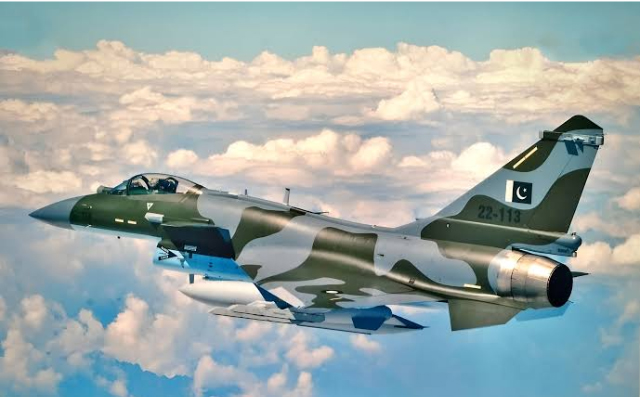
Moon Desk: In the latest round of hostilities between India and Pakistan, the Pakistan Air Force (PAF) demonstrated a level of sophistication and effectiveness that surprised even seasoned military observers. Much of its success was attributed to the integration of Chinese J-10C fighters equipped with the formidable PL-15 air-to-air missile. But what truly set the PAF apart was its ability to conduct multi-domain operations — a capability it has been developing over the past six to seven years. The concept of multi-domain operations has been around for some time but amongst the regional air forces, the PAF is the first to master and demonstrate it in actual combat. This evolution did not occur overnight. It is the culmination of nearly 80 years of institutional growth, strategic alliances, operational experience, and technological integration. Both the Indian Air Force (IAF) and PAF originated from the same parent organisation, the Royal Indian Air Force. However, over the decades and through four conflicts — 1947–48, 1965, 1971, and the recent aerial engagements following the Pulwama incident in 2019 and the battle that followed the Pahalgam incident of April 2025— the PAF has carved a unique identity and earning international recognition for punching above its weight.
The culture of the PAF at its birth and for some years to follow had not progressed much from the days of the World War II. A recently published book, The Eagles of Destiny: History of the Royal Pakistan Air force and Pakistan Air Force 1947-1971, a study on the evolution of the PAF, records interviews of two veterans who were commissioned into the Royal Indian Air Force: Air Marshal Zafar Chaudry and Air Vice Marshal Khyber Khan. Both believed that there was limited understanding of the air force’s objectives and purposes and little institutional maturity. Consequently, things like flying discipline were weak – ‘a kind of childish and juvenile behaviour’. A good pilot retracted his undercarriage very quickly after takeoff; did a couple of loops over the airfield; on returning from a sortie beat-up (flying very low over) the airfield and then zoom up; and was capable of landing after sunset even if there was considerable light. While converting to another aircraft a pilot was provided with a just a pilot’s manual and there was ‘hardly any briefing or monitoring by senior pilots. In short, a young flight lieutenant literally ‘flew by the seat of his pants”. The IAF, for all its resources and industrial base, has found itself struggling to translate numbers into capability. Bureaucratic inertia, overcentralised planning, and a risk-averse culture have prevented it from taking bold steps toward doctrinal reform. The PAF, in contrast, has shown agility, cohesion, and clarity of purpose. Its focus on quality over quantity, pragmatic alliances, and integration of multi-domain capabilities has allowed it to emerge as a credible regional air force.
As both air forces look toward the future, with programmes like India’s AMCA and Pakistan’s Project AZM (fifth-generation initiatives), the race will be shaped not only by manned aircraft but by a plethora of aerial vehicles, cyber warfare, space-based assets, and artificial intelligence. The PAF’s challenge will be to maintain its edge with limited resources, with resilience, professionalism and predicting revolutionary changes in warfare based on conflicts around the world like the Russo-Ukrainian War.





